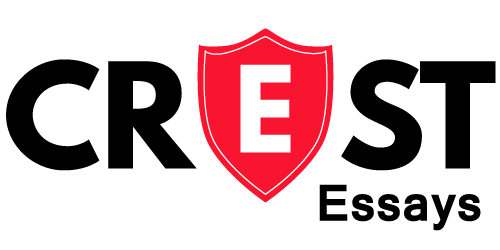Psychology 60: Stress Management
The required textbook is Coping with Stress in a Changing World by Richard Blonna, 4th Edition only. Orange cover. McGraw Hill. ISBN 978-0-07-302660-2.
Use only 4th edition of this textbook.
Chapter 12
In your work – You need to give quotes from textbook and page number for each quote.
Total of 275 words.
Respond to the following for this mini class discussion:
1. Share a real life example that matches something from the chapter 12 or module for this week.
Your answer:
2. Connect your example to this week’s class material that is relevant as part of your discussion.
Your answer:
3. Use one quote from the module or chapter and the page number (if from the chapter) along with your example.
4. Your answer:
Please do not use real names if sharing about others.
Use only unique information and not any quotes which have been used in prior postings. Read ALL your fellow classmates’ posts.
Modules:
Module 12 – Childhood and Adolescent Stress
Erikson’s Stage Theory
To begin this module/chapter it is important to remember what our lives were like when we were children. With this in mind, please complete the “Assess Yourself 12-1” activity on p. 335.
This section of the module on Erikson’s Stages of Development might be more of a review for those of you who have taken an introductory psychology class or a lifespan/developmental psychology class. In addition to the information below, please see Table 12-1 on p. 316.
Erik Erikson’s Stages of Psychosocial Development – 8 stages
Trust vs. Mistrust (infancy) – If needs are met dependably, the infants will develop a sense of basic trust OR they will distrust the world and see it as unsafe.
Autonomy vs. Shame and doubt (toddlers) – toddler will use their own will and do things for themselves OR they will be ashamed and doubt their own abilities.
Initiative vs. Guilt (preschool) – preschoolers learn to initiate tasks, make plans, and carrying out plans (acting responsibly) or they may feel guilty about trying to be independent and misbehaving.
Industry (aka Competence) vs. Inferiority (Elementary School) – children will master knowledge and learn to met the demands of school and home (responsibility) OR if they feel inferior and develop a low self esteem.
Identity vs. Role Confusion (Adolescence) – Teenagers work at finding a sense of self and identity OR they become confused about who they are.
Intimacy vs. isolation (Young Adulthood) – Young adults develop close relationships and gain capacity for intimacy OR they feel socially isolated and do not have meaningful relationships with others.
Generativity vs. Stagnation (Middle Adulthood) – The middle age adult has a sense of contributing to the world and their next generation OR they become self-centered and stagnant and feel they have a lack of purpose.
Integrity vs. Despair (Late Adulthood) – If they have reflected on life and feel meaning they will feel satisfaction OR they will be despaired over lack of meaning in life and may feel like a failure.
Module 12 – Childhood and Adolescent Stress
Stress and Development stages
Think back to your childhood… Life was probably at a slower pace then, compared to now. Each year the pace of life seems to pick up and go faster and faster. With information so readily available, there are many moral issues to face.
Infancy – birth until about age 3.
Babies are totally dependent on someone to take care of them. In the infancy stage of development, infants will either learn to trust others for taking good care of them, or they will not trust. Trusting that the world is safe is very important, for without this basic trust we can lose our hope and withdraw.
Research shows that the stress from the mother during pregnancy translates to stress for her baby in many ways such as, but not limited to: low birth weight, decreased language abilities, higher cortisol levels, memory problems later in life, and emotional disorders.
The most stress for the baby is when the baby leaves the womb. Babies will suck for self-soothing, and cry or sleep to cope with stress.
Childhood – ages 3-6 approximately.
Children learn self-control and how to cooperate with others during this time period. Social skills are being developed and children are able to get around more on their own. If the child learns some on their own then they may become more autonomous. Examples of freedom and self-control at this development juncture are:
• walking
• toilet training
• managing frustration
• conflicts
• guilt
• self-restraint
Later in this stage of childhood, children think about things such as: What do you like, what do you dislike? At this stage we it’s about “me” – children are egocentric – meaning the ego is the center. The child’s needs are front and center. This is the “pay attention to me!” part. Will the child take initiative and find a sense of purpose? Will the child learn how to fail? Failure helps us learn and can be positive in terms of life’s lessons.
School Age – Ages 6-12.
Potential stressors during this developmental stage include: being separated more from the parents by going to day care or school, more competition, the interactions with other peers can be stressful. Is the child competent? Or do they withdraw? A sense of productivity is often called “industry” in this developmental stage.
Stressors include:
• Inferiority complex
• Performance issues in schoolwork or extracurricular activities (i.e sports)
• Lack of instant gratification
• Control of emotions
Module 12 – Childhood and Adolescent Stress
The five R’s of parenting for children
How can parents or caregivers help their children cope better with stress?
• Be a role model – use the five R’s of coping for you
• Teach your children how to use the five R’s of coping
• Do not overschedule or overbook yourself or your child’s life – this is very commonplace and not a good thing. Balance play time (down time) with school, sports, clubs, social life time.
• Let kids be kids – they will be grown up soon enough, let them enjoy being a child
Please read “Stress in Our World 12-1” and “Diverse Perspectives 21-1” on p. 320.
Please read the following related article: Are your kids overscheduled?
Adolescents
Please complete the “Assess Yourself 12-2” on p. 336 to get you engaged and refresh your memory of your own personal stress level during adolescence.
When childhood ends, but we are not yet an adult, we are an adolescent or “teenager”. During our adolescence we have a lot of changes to cope with such as puberty, sex, and identity issues. Adolescents are searching for the answer to the question “Who am I?”
Sometimes, adolescents experience an identity crisis, where they become confused about themselves, their roles, and expectations placed upon them. If you are currently a parent of a teenager, you are probably very aware of this going on with your adolescent.
During this time period, the adolescent’s body also goes through biological changes known as puberty.
Please see Figure 12-2 at the top of p. 324 for the female and male body and the changes that occur in each bodily area as a result of puberty.
For teenage boys, puberty includes changes such as: pubic hair growth, deeper voice, ejaculation, testes enlargement.
For teenage girls, puberty includes changes such as: pubic hair growth, menstrual period, lower voice, breast enlargment.
What is stressful for adolescents?
• Sex
• Hormone and other biological changes
• Depression (short-term is common)
• Identity and gender issues – please read “Stress in Our World 12-2” on p. 326
• School
• Friends/peer/social pressures
• Planning for the future (e.g. going to college or not, working or not).
• Social media
• Drugs/alcohol pressures
• Academic performance (especially in high school)
Should parents discuss sex with their adolescents? Yes and it should be an ongoing dialog, not a one time lecture or discussion. Ignoring or avoiding taking about sex will not make it go away. Honesty is the best policy during this confusing time period. As the author points out, there are so many messages that adolescents will receive from the Internet, peers, the media, you, other family members, etc., and they will need to find a way to sort through it all. Many schools have some type of sex education class or one time workshop, but research shows that beginning these conversations earlier with open communication may lead to fewer unwanted pregnancies.
Below is an except about sex education from Mossler, R. (2011) Child & Adolescent Development (p.301). San Diego, CA. Bridgepoint Publishing. Please read:
Depression and suicide are risks at this age. Adolescents need to be able to talk to someone about their feelings. Many feel isolated with little support. They need to feel less alone, and learn that it is normal to be mildly depressed for a short time during this period of life. On the other hand, depression that lasts for over a year and is occurring on a daily basis is something to be concerned about. Please seek the help of someone qualified to deal with depression if you know of someone or are a parent to an adolescent who seems very depressed and who might be suicidal. Take all threats very seriously. The LAVC Student Health Center has referrals, or you can ask your friends, clergy member, or medical doctor(s) for referrals to a mental health professional. Please read the “Stress Buster Tips” on p. 329 for the warning signs and how to help someone who might be suicidal.
School is stressful (as you know!) High School is very different from college, and adolescents can have enormous peer pressure to deal with. They also have pressures and stress from school with new students who might not have attended the same elementary school. Other stresses include the social pressures by friends, the media, their families, and their own ideals and values. If the adolescent does not have high self-esteem and a strong sense of control, they will no doubt feel overwhelmed, stressed out, and often frustrated and depressed.
Other stressors: pregnancy, abortion, serious illness, dropping/failing school.
Coping with Stress in Teenage Years
Some examples of poor copings strategies during adolescents: using drugs (prescription or non-prescription), alcohol, binge eating or self-starvation, and/or risky sexual activities.
Think back to your early teenage years… What would have helped you to cope better with your stress?
The Five R’s with Adolescents
Rethink – provide current factual information on both sides on an issue (pros and cons). Point out illogical beliefs.
Reduce – teach them to anticipate potential stressors and use the triple A’s method to cope.
Relax – teach them breathing and the other relaxation techniques so they will have these resources to draw upon when they are stressed.
Release – martial arts, sports, and other physical activities are beneficial to help adolescents cope with stress.
Reorganize – be a role model and help teach them the stress-reducing lifestyle.
Please read “Living Constructively” on p. 331.
Please read the following article from Yoga Journal about yoga and teenagers: Teaching Yoga to Teenagers
As a side note, the Yoga Journal link from above also has lots of free items such as yoga articles, free yoga videos, free podcasts, and more. Free is always nice, especially in this economy.
Use the order calculator below and get started! Contact our live support team for any assistance or inquiry.
[order_calculator]

